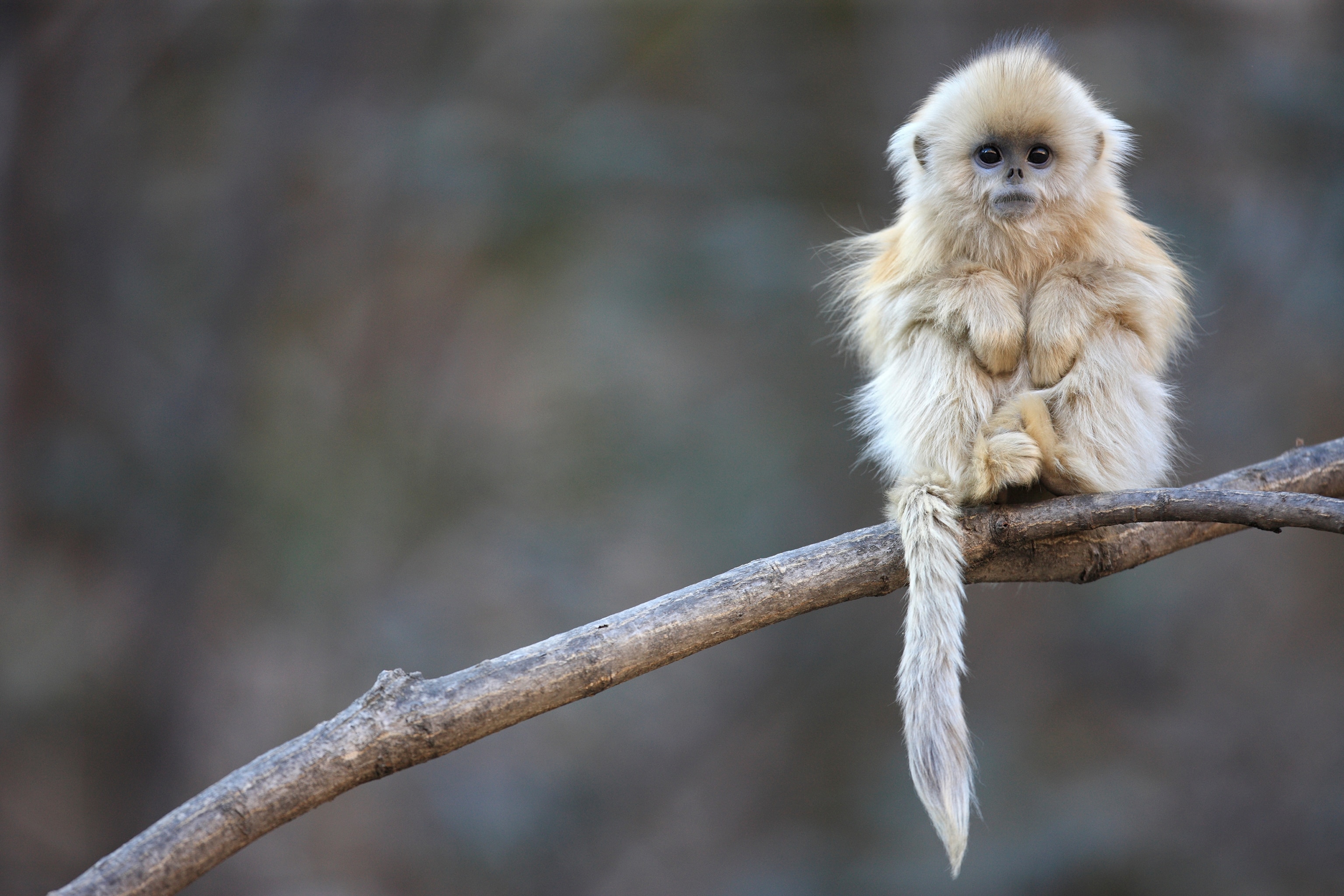






The Monkey Who Went Into the Cold
The heavy fur of China’s snub-nosed monkey is a boon in subzero winters. Its quirky face could help too.
Tucked high in the Qin Ling Mountains of central China, a nimble primate with a peculiar mug has conquered a pitiless landscape. The golden snub-nosed monkey is one of five related species—remnants of once widespread populations whose ranges were squeezed by climate change after the last ice age. Enduring groups, living in territorial bands that can top 400 animals, are being squeezed again by logging, human settlement, and hunters wanting meat, bones (said to have medicinal properties), and luxurious fur. Many have been pushed into high-altitude isolation, where they leap across branches, traverse icy rivers, and weather long winters at nearly 10,000 feet, shielded by that coveted coat.
About 20,000 of the golden variety remain on Earth. Some 4,000 inhabit the mountainous region where Chinese officials set up the Zhouzhi National Nature Reserve to protect the species. Living both in and out of reserve boundaries, Rhinopithecus roxellana, whose Latin name was allegedly inspired by the snub-nosed concubine of a 1500s sultan, has made great adaptations to survive, subsisting on low-protein lichens and bark when trees are bare. Large social networks help fend off predators, like clouded leopards.
Moms outrank barren females in these snub-nosed societies, and males with multiple mates gain high status. So do males that display "courage and perseverance," says biologist Qi Xiao-Guang of Northwest University in Xian, China. Bands may clash when ranges overlap, and "males show their vigor by fighting and forcing the enemy out." Territorial animals, including these and other primates, often do more posturing than injuring—mainly to protect themselves.
Why the odd face? No one is sure, but Penn State primatologist Nina Jablonski suggests the flat muzzle evolved to combat extreme cold, "which would cause frostbite to bare, exposed, fleshy noses."
You May Also Like
Go Further
Animals
- Orangutan seen using plants to heal wound for first timeOrangutan seen using plants to heal wound for first time
- What La Palma's 'lava tubes' tell us about life on other planetsWhat La Palma's 'lava tubes' tell us about life on other planets
- This fungus turns cicadas into zombies who procreate—then dieThis fungus turns cicadas into zombies who procreate—then die
- How can we protect grizzlies from their biggest threat—trains?How can we protect grizzlies from their biggest threat—trains?
Environment
- What La Palma's 'lava tubes' tell us about life on other planetsWhat La Palma's 'lava tubes' tell us about life on other planets
- How fungi form ‘fairy rings’ and inspire superstitionsHow fungi form ‘fairy rings’ and inspire superstitions
- Your favorite foods may not taste the same in the future. Here's why.Your favorite foods may not taste the same in the future. Here's why.
- Are the Great Lakes the key to solving America’s emissions conundrum?Are the Great Lakes the key to solving America’s emissions conundrum?
- The world’s historic sites face climate change. Can Petra lead the way?The world’s historic sites face climate change. Can Petra lead the way?
History & Culture
- Meet the ruthless king who unified the Kingdom of Hawai'iMeet the ruthless king who unified the Kingdom of Hawai'i
- Hawaii's Lei Day is about so much more than flowersHawaii's Lei Day is about so much more than flowers
- When treasure hunters find artifacts, who gets to keep them?When treasure hunters find artifacts, who gets to keep them?
Science
- Why ovaries are so crucial to women’s health and longevityWhy ovaries are so crucial to women’s health and longevity
- Orangutan seen using plants to heal wound for first timeOrangutan seen using plants to heal wound for first time
Travel
- 5 of Uganda’s most magnificent national parks
- Paid Content
5 of Uganda’s most magnificent national parks - On this Croatian peninsula, traditions are securing locals' futuresOn this Croatian peninsula, traditions are securing locals' futures
- Are Italy's 'problem bears' a danger to travellers?Are Italy's 'problem bears' a danger to travellers?




